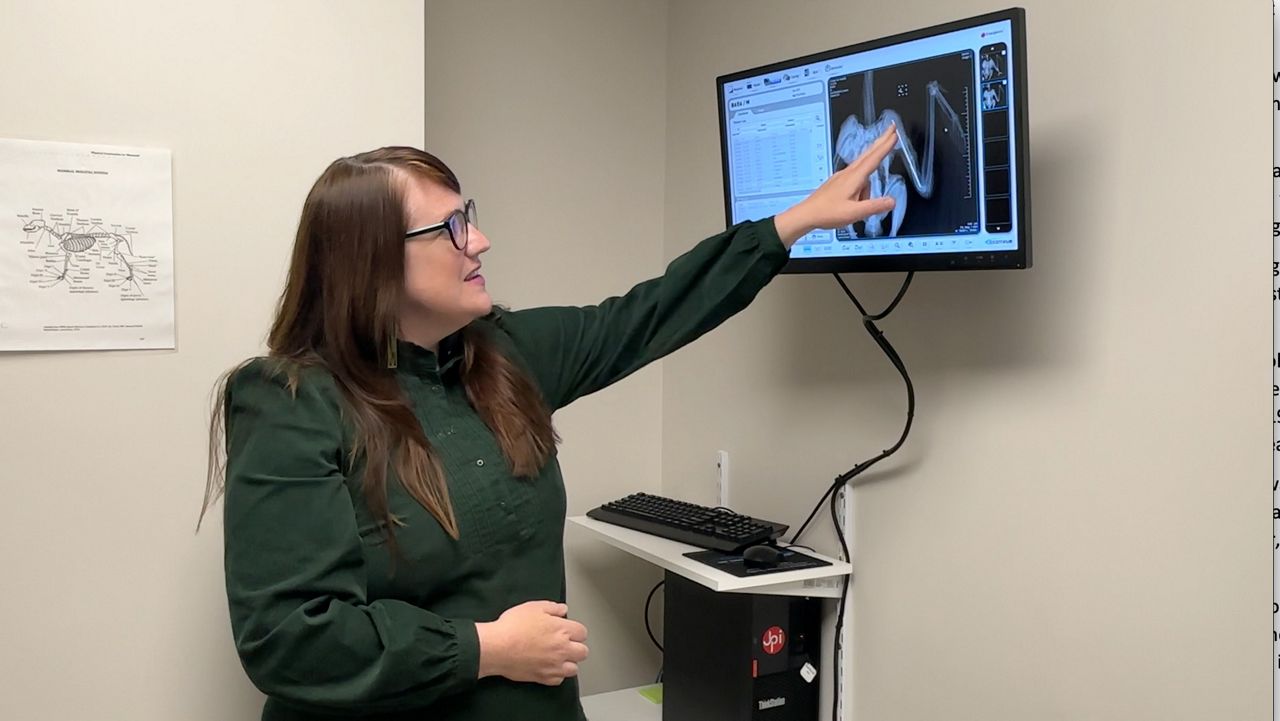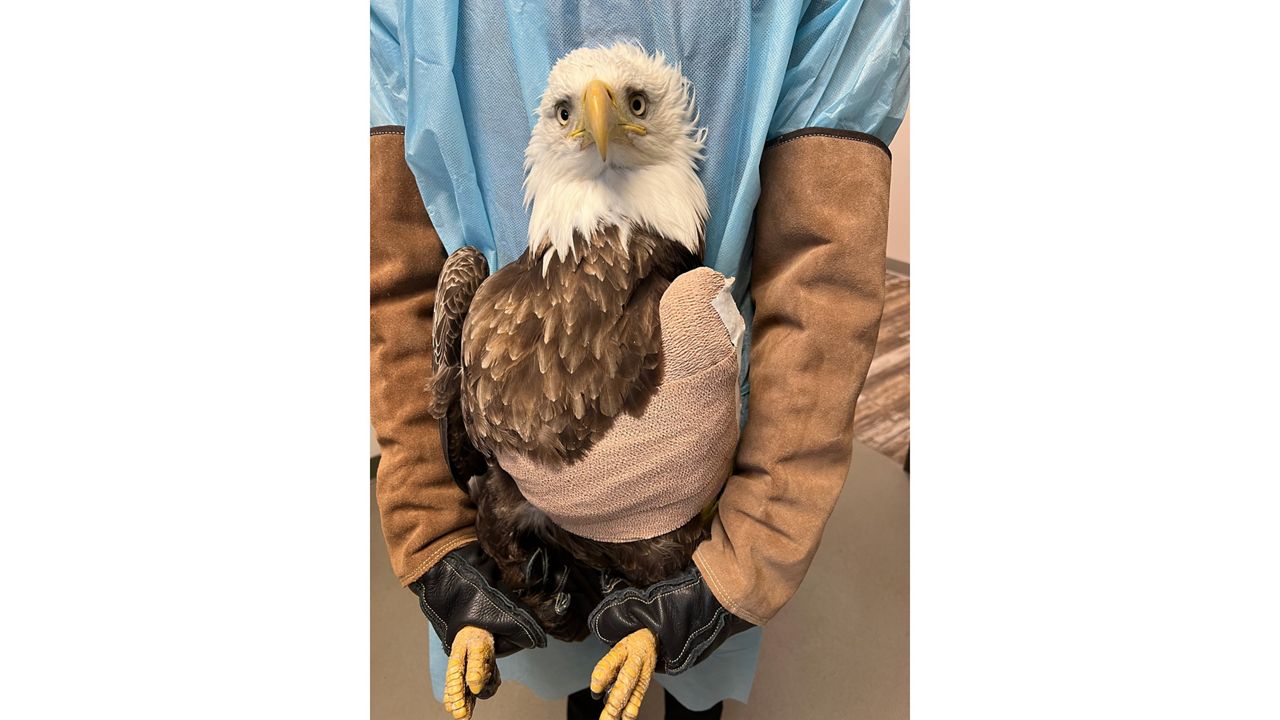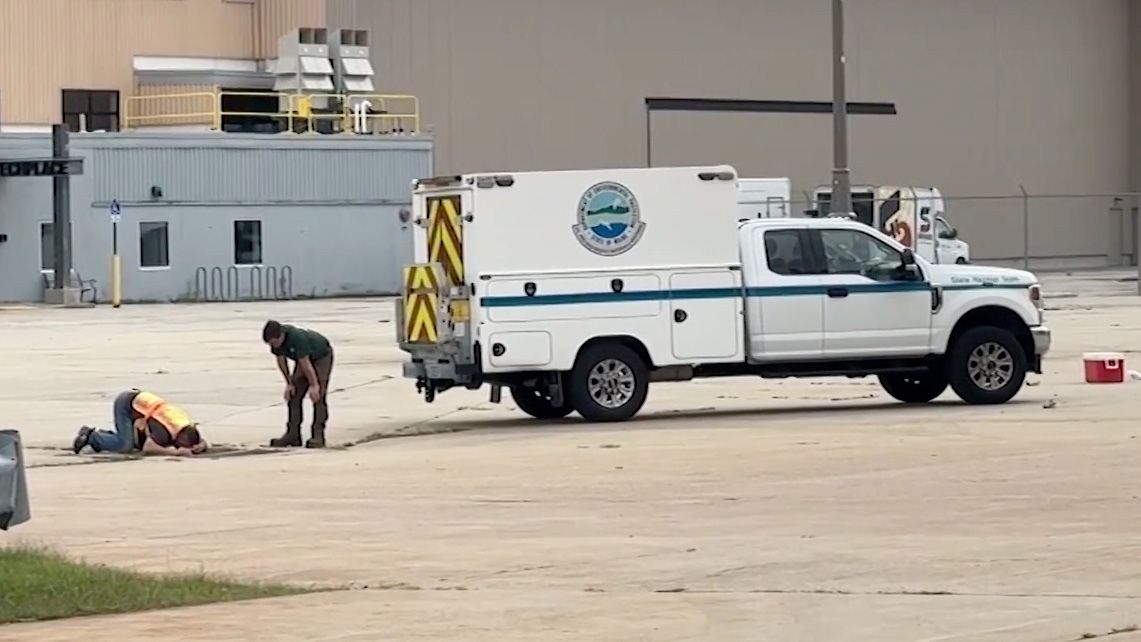A bald eagle struck by a car on the highway last month is expected to recover fully from his injuries, though he needed extensive surgery in York to mend a broken wing.
“He’s incredible,” said Kristen Lamb, executive director of the Center for Wildlife in Cape Neddick. “He’s still strong and such a survivor. I just can’t imagine going through all of that and being as strong as he is.”
The center has been nursing the eagle back to health ever since he was struck by a vehicle on Interstate 295 near Gardiner on April 13.
Lamb said the vehicle that struck the bird did not stop and was moving about 70 mph at the time.
The impact broke one of the bones in the eagle’s left wing. What’s worse, Lamb said, is that the bone, like most bones in birds’ wings, is hollow in order to assist with flight. Surgeons had to painstakingly reassemble the broken fragments back together.
Now, Lamb said, surgeons have braced the bone with a metal rod, a sort of internal splint to hold the bone in place while it heals. Once it has, she said, the rod will be removed.
Despite his injuries, Lamb said the eagle is quite lucky. There were virtually no internal injuries beyond some minor bruising. There are also no signs of head injury, and the eagle is behaving normally.

Lamb said the center believes the eagle will eventually make a complete recovery and be released back into the wild. Estimated at five to seven years old based on its plumage, there’s a possibility he has a mate and family to get back to.
“Our hope is always to get them back as soon as possible, to get them back exactly where they came from for the most part because most wild animals are territorial,” she said.
According to the center, bald eagle populations have had a roller-coaster ride over the past century. They were declared an endangered species in the 1960s, with Maine having the smallest official count nationwide. In 1967 there were only 21 nesting pairs, with only six known surviving eaglets that year.
Since then, populations have surged. In 1995 the bald eagle was reclassified nationwide as “threatened,” with 192 nesting pairs in Maine alone. By 2009 bald eagles were “delisted” among endangered species altogether, with about 503 nesting pairs recorded in Maine that year.
Lamb said her center and another based in Freedom are the only ones with veterinarians capable of treating eagles. Typically, she said, the center treats between three and five eagles every year for various injuries, including broken bones, head trauma and eye injuries.
Lamb said the eagle will spend at least the next three to four weeks at the center, followed by physical therapy on the wing to make sure it is functioning properly.









